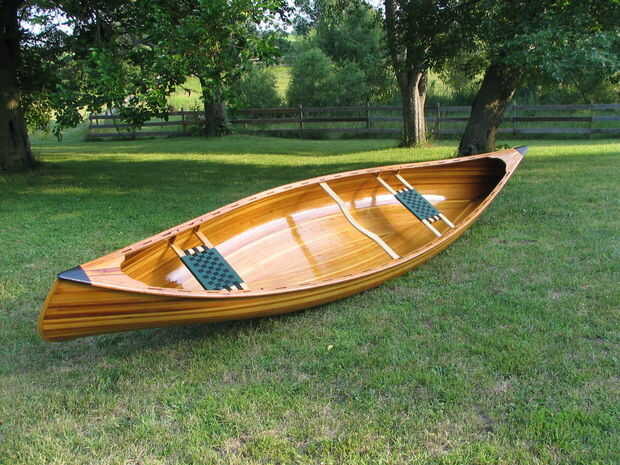Wooden Canoe Construction: How to Choose the Right Wood for Durability

Wooden Canoe Construction: How to Choose the Right Wood for Durability
The enduring allure of wooden canoes lies in their graceful lines, natural beauty, and timeless craftsmanship. Choosing the right wood for your canoe construction is paramount to its durability and longevity. This article delves into the crucial considerations for selecting the ideal wood for your wooden canoe project, emphasizing factors like strength, water resistance, and aesthetics.
Understanding Wood Properties for Canoe Construction
Not all wood is created equal. Certain species possess qualities that make them particularly well-suited for canoe construction, while others are less ideal. The following key characteristics should guide your selection:
Strength and Durability
A canoe must be strong enough to withstand the rigors of paddling, carrying weight, and potential impacts. Some woods are known for their high tensile strength, meaning they resist stretching and tearing, while others excel in compression strength, resisting crushing forces. For example, white cedar and spruce are known for their excellent tensile strength, making them ideal for canoe ribs and gunwales. Oak, with its high compression strength, is often used for the canoe's keel, providing structural integrity.
Water Resistance
Canoes are inherently exposed to water, making resistance to rot and decay essential. Woods naturally rich in oils and resins tend to be more water-resistant. Cedar, for instance, contains natural oils that repel moisture, making it a popular choice for canoes. Redwood, known for its resistance to rot and insects, is another excellent option. When selecting wood, consider its natural resistance to water damage to ensure your canoe's longevity.
Workability
Canoe construction involves shaping, bending, and joining wood. Some species are more amenable to these processes than others. White cedar, for example, is known for its easy workability, making it a favorite among builders. Its flexibility allows for graceful curves and contours. Oak, while strong, is more challenging to work with due to its hardness. Selecting a wood that balances strength with workability is crucial for successful construction.
Aesthetic Appeal
The beauty of a wooden canoe is often a key factor in its appeal. The color, grain pattern, and natural sheen of the wood can significantly impact the overall aesthetic. Cedar's warm, reddish hue and attractive grain make it a popular choice for canoes. White pine, with its soft, creamy color and straight grain, offers a distinct visual appeal. Ultimately, choosing a wood that complements your aesthetic preferences and complements the overall design of your canoe is essential.
Common Woods for Canoe Construction
Here are some of the most common woods used in wooden canoe construction, along with their key properties:
Cedar (Thuja occidentalis)
Spruce (Picea spp.)
White Pine (Pinus strobus)
Oak (Quercus spp.)
Redwood (Sequoia sempervirens)
Factors to Consider When Choosing Wood
Beyond the inherent properties of the wood, several additional factors can influence your decision:
Availability and Cost
Consider the availability of different wood species in your area. Some woods might be more readily available and affordable than others. The cost of lumber can vary depending on the species, grade, and region. Be sure to factor in the overall cost of the wood when planning your canoe construction.
Climate and Environment
Your local climate and environment can impact wood selection. If you live in a humid area, choosing woods with excellent water resistance is crucial. For areas with harsh sunlight, selecting woods that resist UV damage may be beneficial. Consider how the wood will be exposed to the elements and choose a species that can withstand those conditions.
Personal Preference
Ultimately, your personal preference for the look, feel, and workability of the wood plays a significant role. Consider the aesthetics you desire for your canoe and the level of experience you have with woodworking. Some woods are more forgiving for novice builders, while others might require more expertise.
Conclusion
Choosing the right wood for your wooden canoe is a crucial step in ensuring its durability and longevity. By understanding the key properties of different woods and considering factors like availability, climate, and personal preference, you can make an informed decision that meets your specific needs and desired aesthetic. With careful planning and selection, your wooden canoe will not only be a functional vessel but also a testament to the enduring beauty and craftsmanship of wood.
0 comments:
Post a Comment